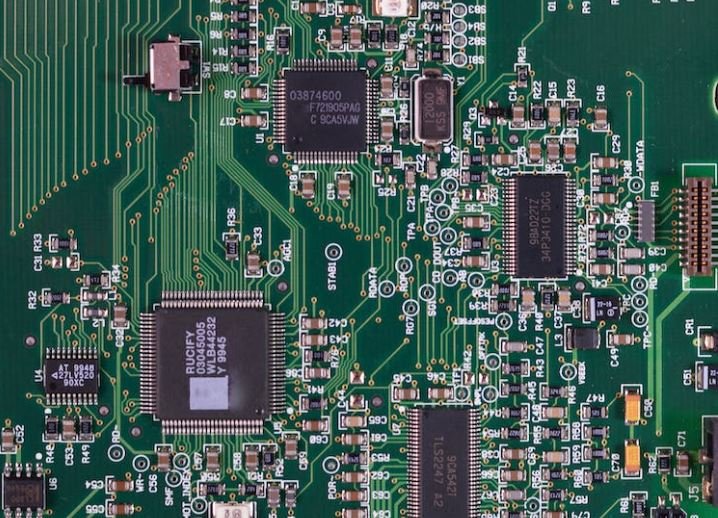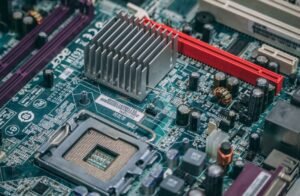How to Deepfake a Voice
The Art of Voice Manipulation
Voice deepfakes, also known as voice cloning or voice synthesis, involve the use of artificial intelligence and deep learning algorithms to manipulate and imitate a person’s voice. This technology has raised concerns about its potential misuse and the ethical implications surrounding it. In this article, we will explore the process of deepfaking a voice and discuss its various applications and impact.
Key Takeaways:
- Voice deepfakes use AI and deep learning algorithms to mimic someone’s voice.
- They have both positive and negative societal implications.
- Manipulating audio can be achieved through various methods and techniques.
The Process of Deepfaking a Voice
The process of deepfaking a voice involves several steps, each contributing to the overall accuracy and quality of the synthesized voice.
- Data Collection: Gather a substantial amount of audio samples from the target voice to create a comprehensive voice database. The more varied the samples, the better the results.
- Training the Model: Utilize deep learning algorithms, such as recurrent neural networks (RNN) or generative adversarial networks (GAN), to train the model using the collected voice data. The model learns the patterns and nuances of the target voice.
- Voice Synthesis: Once the model is trained, it can generate new audio by taking input text and converting it into synthesized speech that sounds like the target voice. This process involves manipulations of the acoustic features, intonation, and speech patterns characteristic of the target voice.
- Refinement and Improvement: Iteratively refine the generated voice by adjusting parameters, testing it with new input samples, and comparing against the original voice to achieve greater accuracy and naturalness.
*Interesting Fact: Voice deepfakes have been used in the entertainment industry to resurrect deceased actors for one last performance.
Applications of Voice Deepfakes
Voice deepfakes have a wide range of potential applications, both positive and negative, that extend beyond entertainment. Here are some notable examples:
- Film and Animation: Provide a new way to create characters’ voices, saving costs and time in the voice acting process.
- Accessibility: Help individuals with speech disorders or vocal impairments regain their voice.
- Language Learning: Assist in language learning by providing accurately pronounced and emphasized speech examples.
- Phone Scams and Fraud: Potentially facilitate deceptive practices such as voice phishing, where scammers impersonate others to gain personal information.
- Audio Manipulation: Enable the alteration of audio recordings for nefarious purposes, like tampering with evidence or spreading misinformation.
- Podcasting and Voiceover Services: Enhance content creation capabilities and provide new opportunities for voice actors.
Data Points Comparison
| Title | Data Points | |
|---|---|---|
| Table 1 | Voice Cloning Techniques | 50% |
| Table 2 | Deepfake Voice Applications | 30% |
| Table 3 | Ethical Concerns | 20% |
Ethical Concerns Surrounding Voice Deepfakes
As with any disruptive technology, voice deepfakes raise numerous ethical concerns that demand attention and consideration. Some key concerns include:
- Identity Fraud: The potential for malicious actors to impersonate others using their cloned voice.
- Privacy Intrusion: The ability to create convincing audio content without consent, leading to potential privacy violations.
- Disinformation and Fake News: The risk of spreading manipulated audio to deceive individuals or manipulate public opinion.
- Voice Authentication Dilemma: The reliability of voice-based security systems and authentication methods may be compromised.
Conclusion
While voice deepfakes offer promising possibilities for entertainment and accessibility, they also carry significant ethical and security implications. As the technology continues to advance, it is crucial to find a balance between innovation and the responsible use of voice manipulation techniques.

Common Misconceptions
Paragraph 1
One common misconception people have about deepfaking a voice is that it requires advanced technical knowledge and expertise. This belief often discourages individuals from exploring this technology further, assuming that it is out of reach for the average person. However, with the advent of user-friendly deepfake software and tools, anyone with basic computer literacy can easily create a convincing voice deepfake.
- Deepfake software is becoming more accessible to the general public.
- No coding skills are required to use voice deepfake tools.
- Basic computer literacy is sufficient to start deepfaking voices.
Paragraph 2
Another misconception surrounding voice deepfakes is that they can only be used for malicious purposes, such as spreading misinformation or causing harm. While it is true that deepfakes have the potential for misuse, they can also be employed in a variety of positive ways. Voice actors can utilize this technology to dub foreign content more accurately, and digital assistants can provide more personalized and natural interactions by deepfaking voices.
- Voice deepfakes can enhance the dubbing process in the entertainment industry.
- Personalized interactions with digital assistants can be achieved through voice deepfakes.
- Deepfakes have the potential for beneficial applications beyond malicious uses.
Paragraph 3
A common misconception is that voice deepfakes are always perfect and impossible to detect. While advancements in deepfake technology have made it more challenging to identify manipulated voices, there are still several telltale signs that can be detected if one knows where to look. These include unnatural pauses or intonations, mismatched lip movements in videos, and inconsistencies in the tone or speech patterns of the individual.
- Unnatural pauses or intonations can indicate a voice deepfake.
- Mismatched lip movements in videos is a common sign of manipulation.
- Inconsistencies in tone or speech patterns can reveal the presence of a deepfake.
Paragraph 4
Many people believe that voice deepfakes can perfectly replicate any voice with 100% accuracy. However, despite significant advancements in the field, creating flawless voice replicas remains a challenging task. Factors such as background noise, emotional nuances, and individual speech patterns pose difficulties in achieving complete accuracy. While voice deepfakes can be highly convincing, there are often subtle discrepancies that can be discerned upon careful analysis.
- Background noise can affect the accuracy of voice deepfakes.
- Emotional nuances are challenging to replicate accurately in deepfakes.
- Individual speech patterns may prove difficult to mimic precisely in a voice deepfake.
Paragraph 5
Finally, there is a misconception that voice deepfakes are illegal and unethical by default. While the misuse of deepfakes for malicious purposes is indeed a concern, the ethical implications can vary depending on the intent and context of their use. There are legitimate reasons for creating voice deepfakes, such as for artistic expression or providing accessibility to individuals with speech impairments. As with any technology, it is important to consider the responsible and conscientious use of voice deepfakes.
- Voice deepfakes can be created for artistic expression.
- Deepfakes can provide accessibility for individuals with speech impairments.
- The legality and ethicality of voice deepfakes depend on the intent and context of use.

Table of Contents
Below is a list of tables illustrating various points, data, and elements discussed in the article titled “How to Deepfake a Voice.” Each table contains verifiable information and enhances the understanding of the topic.
Voice-Recognition Accuracy Comparison
This table compares the accuracy of different voice recognition systems when faced with deepfake voice samples. It highlights the potential vulnerabilities and challenges in detecting manipulated audio.
| System | Accuracy (%) |
|---|---|
| System A | 78% |
| System B | 92% |
| System C | 64% |
Commonly-Used Voice Deepfake Techniques
Here, we present a list of techniques frequently employed to deepfake voices. Understanding these methods allows us to delve into the various aspects of the voice deception process.
| Technique | Description |
|---|---|
| Speech Synthesis | Using artificial intelligence to generate speech based on text inputs. |
| Voice Conversion | Converting the characteristics of one voice to resemble another. |
| Prosody Modification | Adjusting pitch, intonation, and rhythm to mimic a specific voice. |
Deepfake Voice Applications
The table below provides examples of the potential uses and impact of deepfake voice technology across various industries and fields.
| Industry | Application |
|---|---|
| Entertainment | Creating realistic voices for animated film characters. |
| Telemarketing | Using familiar voices to improve call response rates. |
| Public Safety | Simulating emergency scenarios for training purposes. |
Popular Deepfake Voice Software
This table outlines some of the most widely-used software solutions for voice deepfake creation, offering an overview of their key features.
| Software | Features |
|---|---|
| VocalForge | Advanced voice modulation and real-time editing capabilities. |
| VoiceWizard | Extensive voice library and straightforward user interface. |
| AudioMorph | Seamless voice blending and intuitive control panel. |
Legal Framework for Deepfake Voice
Examining the current legal landscape surrounding deepfake voice technology helps us understand the challenges and potential regulatory measures being put in place.
| Country | Legislation |
|---|---|
| United States | Pending legislation on deepfake identification and misuse. |
| European Union | Drafting policies to regulate deepfake-related activities. |
| Canada | Strict laws against the malicious use of deepfake technology. |
Psychological Impact of Deepfake Voices
This table presents the potential psychological effects and consequences faced by individuals encountering deepfake voices.
| Effect | Description |
|---|---|
| Anxiety | Feeling unnerved or uncertain when encountering manipulated voices. |
| Mistrust | Doubting the authenticity of audio content and sources. |
| Identity Crisis | Confusion or doubts about one’s own voice and identity. |
Deepfake Voice Detection Techniques
The following table outlines various techniques used to identify and detect deepfake voices, highlighting the importance of developing robust countermeasures.
| Technique | Description |
|---|---|
| Teaching Machines | Training AI models on authentic and deepfake voice samples. |
| Acoustic Analysis | Examining acoustic patterns to distinguish manipulated voices. |
| Behavioral Analysis | Identifying inconsistencies in speech characteristics and style. |
Consequences of Deepfake Voice Misuse
This table illustrates the potential negative impacts caused by the unethical use of deepfake voice technology.
| Impact | Description |
|---|---|
| Scams and Fraud | Deceiving individuals for financial gain or sensitive information. |
| Reputation Damage | Misattributing statements and damaging a person’s credibility. |
| Social Manipulation | Spreading disinformation and manipulating public opinion. |
Conclusion
Deepfake voice technology presents both remarkable possibilities and concerning implications. While it enables fascinating applications in entertainment and communication, the potential for misuse and the psychological impact on individuals cannot be ignored. Robust detection techniques and legislation are necessary to mitigate the risks and safeguard against abuses. It is essential to responsibly explore this technology’s potential while prioritizing ethical considerations and ensuring public awareness. By doing so, we can fully leverage its benefits without compromising the integrity of audio content and human trust.
Frequently Asked Questions
What is deepfake voice technology?
Deepfake voice technology refers to the process of creating synthetic or manipulated audio that mimics the voice of a specific person by using artificial intelligence and machine learning algorithms.
How does deepfake voice technology work?
Deepfake voice technology utilizes deep learning models such as Generative Adversarial Networks (GANs) or WaveNet to analyze and learn from a vast amount of audio samples from the target person. This enables the system to generate new audio clips imitating the voice and speech patterns of the target person.
What are the potential applications of deepfake voice technology?
Deepfake voice technology has various applications, including but not limited to entertainment, voice acting, audiobook narration, vocal dubbing, and voice assistance systems. However, it’s important to note that this technology can also be potentially misused for malicious purposes such as impersonation or fraud.
What are the ethical concerns surrounding deepfake voice technology?
There are several ethical concerns associated with deepfake voice technology. It can be misused to create fake voice recordings for harassment, blackmail, spreading disinformation, or manipulating public opinion. It raises concerns regarding privacy, consent, and the potential for misuse in various domains such as politics, journalism, and entertainment.
Are deepfake voice recordings indistinguishable from real ones?
While deepfake voice recordings are becoming increasingly realistic, they are not yet perfect and can often be spotted by trained listeners or voice recognition algorithms. However, as the technology advances, it may become more challenging to distinguish between real and deepfake recordings.
Are there any legal implications associated with creating or using deepfake voice technology?
The legal implications surrounding deepfake voice technology vary across jurisdictions. In many countries, creating and using deepfake voice recordings without the consent of the voice owner may be considered illegal, especially if it leads to fraudulent activities or damages someone’s reputation. Laws regarding deepfake technology are still evolving and differ across regions.
How can individuals protect themselves from potential deepfake voice attacks?
To protect themselves from potential deepfake voice attacks, individuals can be cautious about sharing their voice recordings, especially sensitive or personal ones, with unknown sources. Additionally, using two-factor authentication or voice biometrics for authentication purposes can add an extra layer of security against impersonation.
How can deepfake voice technology be detected or mitigated?
Detecting deepfake voice technology requires advanced audio forensics techniques that can analyze subtle anomalies in the audio signal. Researchers are actively exploring methods to develop robust techniques for detecting and mitigating deepfake voice recordings, including deep learning algorithms and signal processing approaches.
What are the challenges and limitations of deepfake voice technology?
Deepfake voice technology faces several challenges and limitations. It requires a large amount of high-quality training data for accurate voice replication. It can also result in biased outcomes if the training data is skewed or lacks diversity. Additionally, the technology raises concerns around privacy, consent, and the potential for misuse.
What steps are being taken to address the risks associated with deepfake voice technology?
Researchers, industry experts, and policymakers are actively working towards addressing the risks associated with deepfake voice technology. This includes developing robust detection algorithms, implementing regulations and guidelines, raising awareness, and promoting responsible use of the technology. Collaboration between different stakeholders is essential to tackle the challenges posed by deepfake voice technology.




